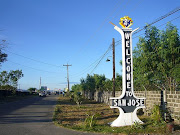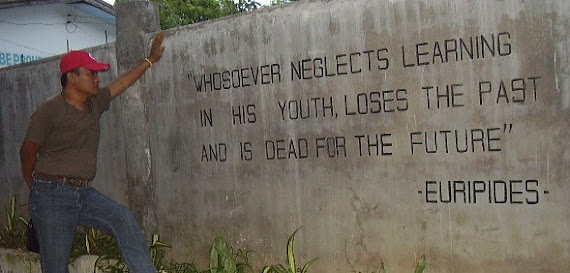At daybreak of December 15, 1944, Gen. Douglas McArthur ordered the attack on Mindoro Island and heavy guns started shelling the beaches of San Jose-Pandurucan to clear the way for a ground troop. The said landing of US and Allied forces marked the liberation of the island from enemy occupation during the war. I would like also to state that though the US forces landed in San Jose, the invasion or "liberation" was island-wide.
It was Mrs. Douglas MacArthur herself said in her letter to the late local historian Rodolfo M. Acebes dated Dec. 15, 1994, during the 50th anniversary of the Mindoro landing, that, "Mindoro became the key that unlocked the liberation of the Philippines." Gen. William Dunckel, leader of the Mindoro ground forces, constructed the airfields that served as the staging area for the allied forces' third and final landing in Lingayen Gulf, therefore that comment of the general’s widow.
But in this era of historical distortion and fake news, such historical data seems not important at all. In this coming election, let us seek who among our politicians will truly strengthen our local history and will establish doable and serious plans on embracing our homegrown history and would not just lip-service them. It appears that only a few know that the statue at the entrance of the San Jose Municipal Plaza and the commemorative marker at the Aroma Beach are very much related.
Landing Day
On that day, exactly 77 years ago today, heavy guns and artilleries begin bombarding the beaches of San Jose to clear the way for the attacking ground troops of the “liberators”. The attack was initiated by the ship USS Nashville, 8 destroyers, 31 landing crafts, 17 minesweepers, 143 small crafts, and 12 escort destroyers. Gen. McArthur’s order defied Pentagon’s stand that the Mindoro attack should be abolished because the US defense department believed that heavy Japanese forces are occupying the island and that could be risky for them to execute.
By 7 am, 11,780 soldiers under the 24th Infantry Division, 9,516 Army Air Force, and 5,901 service troops landed at the beach followed by Amphibious Forces carrying 16,500 soldiers with 27,600 tons of supplies. The battle was a big mismatch, so to speak. The Allied forces were too big for the enemy and the Japanese retreated to our boondocks. The only danger that distressed the GIs were the Kamikazee zero fighter planes that killed 120 Americans including Col. John Murtha, commander of the 310th Bombardment Wing when it crash-dived into USS Nashville. Later, a village in San Jose was named after the pilot who was killed in action at that time. The now known as San Jose Airport was originally constructed by the GIs and was named McGuire Airfield in honor of American 5th Air Force, Thomas McGuire who was killed in Negros before the Mindoro Landing. The present airport was a US airbase during the war and is still operational.
MacArthur knew Mindoro well. To him, getting Mindoro meant dividing the Japanese forces in Luzon from those in Visayas and Mindanao, thus weakening the strength of the enemy. It had a solid ground where he wished to construct airfields for his assault in Luzon via Lingayen.
To MacArthur, with Mindoro in his hands, the island bastions of Iwo Jima and Okinawa stood between America and Japan. Militarily, the purpose of this landing was to secure sites for airstrips providing forward Air Corp bases to support later landings at Lingayen Gulf in Luzon. Without airfields closer to Manila it would be nearly impossible to seize and maintain air superiority in Luzon. Airfields in San Jose would be much closer to the targets on the big island. San Jose, Mindoro is, roughly, 150 miles from Manila.
The Japanese force in Mindoro was not large and was eliminated in three days. The Army was assisted in the campaign by guerrillas from the local Filipinos from different towns of the island. They have already succeeded in various operations against the Japanese before the Americans came.
Faded Away
In the 1950s, according to my grandfather, December 15 each year is celebrated with a fiesta ambiance. Children from both private and public schools all over San Jose and the pioneering residents from all walks of life gather at the old San Jose Town Plaza to celebrate the Mindoro Landing or what they call “San Jose Liberation”. Musical bands are all over providing music to stage plays that depict the lives of our local town heroes like Fermin Baretto, Lawrence Cooper, Ramon Ruffy, Sofronio Untalan, and Vincent Fortune, Sr., and the rest of the southern Mindoro guerrillas. These are the stories that are indefatigably being re-told by our folks to their young children.
In the early 1960s, a statue is built at the entrance of the municipal compound to commemorate the historic event including the marker at the site of the landing at Aroma Beach some 2 kilometers away from the town hall.
Nobody remembered that the Mindoro Landing, aside from the establishment of the Philippine Milling or the Sugar Central in the 1920s, also paved the way for the looming progress of San Jose. With the arrival of the American liberation forces in Mindoro, UP professor, lawyer, and Romblon Assemblyman Gabriel Fabella, who himself came to San Jose to look for work, wrote: "Overnight, San Jose became a city, promising and very prosperous. Upon hearing this, almost everybody wanted to go to San Jose." Truth to tell, in this age of historical distortion and insensibleness, we, especially the youth, lost our sense of history and pride.
The celebrative commemorations were gone and the markers were watered down. There were initiatives both from the government and private sectors in the past, yes, but never been sustained.
Bastions of Democracy
The motives are numerous, but this is the most important in a democratic society: grasp of history is the requirement of political intelligence that can be realized during elections. When we share our common memory, we share history. Without history, a society shares no common memory of what its core values are. History and Elections are integral parts of democracy. Sustainable and comprehensive programs on history must be on the bucket list of every politician when they face us during the forthcoming campaigns.
We need a bunch of politicians or local government leaders with the same passion when it comes to our local history. That is only a starting point, then our upcoming legislators need to initiate another public discussion openly and honestly on how to find other “hidden” historical places and how the existing sites like the Pre-Hispanic structures in Mangarin and the remnants of the Philippine Milling site in Central.
It is sad to note that I am writing this in the midst of the Bangko Sentral ng Pilipinas' attempt to replace the portrait of World War II martyrs Vicente Lim, Josefa Llanes-Escoda, and Jose Abad Santos in our 1,000 peso bill and the removal by Philippine government of a female statue in Manila symbolizing "comfort women" during Japan's occupation. In case you do not know, the details on the death and the remains of Lim, Escoda, and Abad Santos are not known until today and this administration wants to replace them with a portrait of a bird.
In the coming campaign period, why don’t we include this concern in history and raise fundamental questions to our candidates and see if they included them in their platform of government? Aside from other social issues, this will guide us if we are going to vote for a particular candidate or not.
Or we will become a crash-landing community when it comes to political choices.
--------
(Sources: https://corregidor.org/heritage_battalion/abbott/mindoro.html
https://corregidor.org/heritage_battalion/abbott/mindoro.html
https://manilastandard.net/mobile/article/166503
https://alchetron.com/Battle-of-Mindoro
https://newsinfo.inquirer.net/1526951/bsp-removal-of-heroes-on-p-1000-bill-questioned
//japan-forward.com/place-it-somewhere-else-duterte-says-of-uprooted-comfort-woman-statue-in-manila/
Photo: pilipinasworldogs







No comments:
Post a Comment